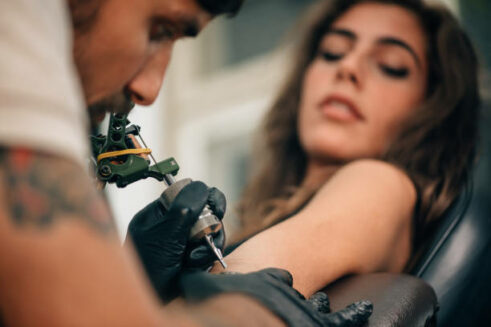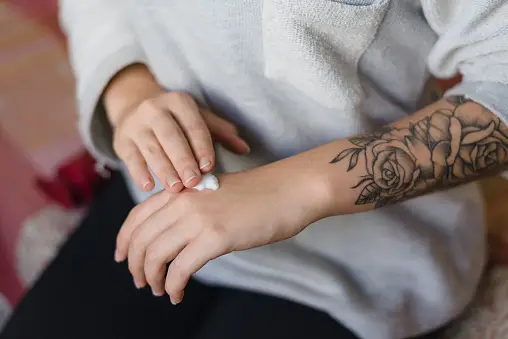Tattoo numbing cream has gained immense popularity for its ability to minimize discomfort during tattoo sessions. This cream, containing local anesthetics like lidocaine or benzocaine, swiftly numbs the skin, facilitating extended sessions and intricate designs. Its increasing demand is due to its convenience, offering relief to individuals with low pain tolerance or those opting for extensive tattoos.
Social media, where influencers share pain-free tattoo experiences, further propels its popularity. Tattoo artists value the creams for reducing client discomfort, leading to smoother sessions and enhanced creativity.
Understanding the Tattoo Healing Process

Getting a tattoo is more than just choosing a design; it’s a fascinating process that blends the artist’s skill with the body’s incredible ability to heal. To ensure a successful and safe healing journey, it’s vital to grasp how tattoos heal and how our bodies respond to the art of tattooing.
When the tattoo needle punctures the skin, it creates numerous tiny wounds, triggering the body’s defense mechanism. Increased blood flow rushes to the area, bringing essential nutrients and white blood cells that aid in repairing damaged tissues.
The tattoo healing journey unfolds in stages. Initially, the body’s immune response kicks in to control bleeding and prevent infection. A scab or a thin layer of dried blood forms, shielding the tattoo. Beneath the scab, the skin reconstructs itself, and new skin cells emerge.
As healing progresses, the tattooed area may itch or start to peel, a natural part of shedding old, dead skin to make way for the new. Resist the urge to scratch or pick, as it can lead to scarring or color loss.
Once the peeling phase subsides, the healed tattoo may still appear slightly dull or raised. This is because the body continues repairing damaged tissue, and the skin takes time to regain its normal texture and color. With time, the tattoo settles, becoming a permanent part of the skin, though individual healing times may vary.
How does Tattoo Numbing Cream Work?
Tattooing can be painful, prompting many to turn to piercing numbing cream or tattoo pain medication for relief. Ces crèmes, often containing lidocaine, prilocaïne, or benzocaine, work by binding to nerve cell sodium channels, preventing pain signals from reaching the brain.
When applied to the skin, they create temporary numbness, enhancing comfort during the tattooing process. Cependant, not all numbing creams are equally effective, and factors like an individual’s pain threshold and skin type can influence their impact.
Pros of Using Tattoo Numbing Cream
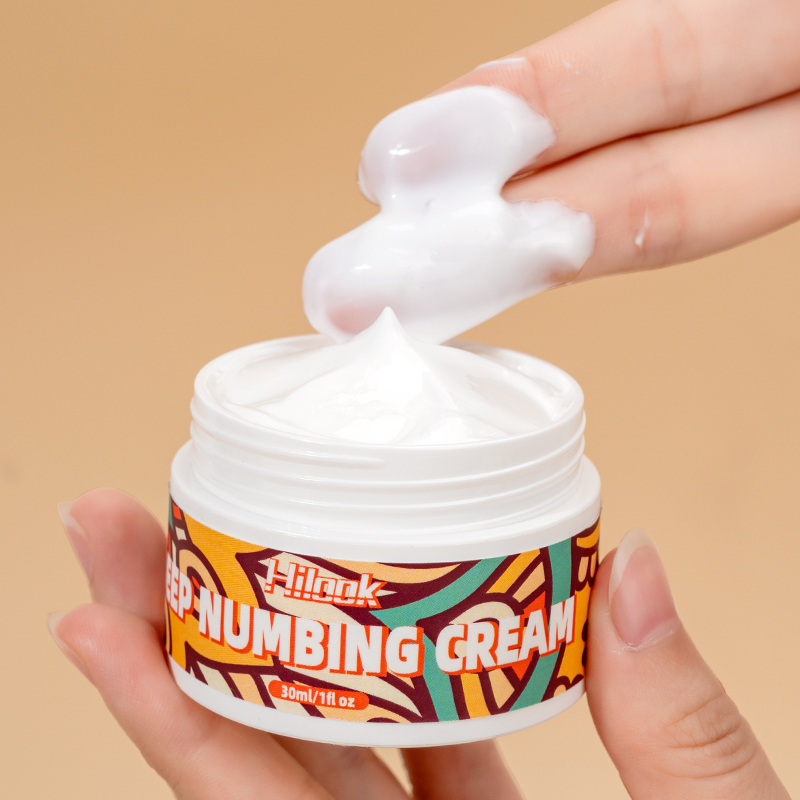
- Pain Reduction: Applying numbing cream before a tattoo session minimizes pain by desensitizing nerve endings.
- Increased Tolerance: Ideal for those with low pain thresholds, numbing creams enhance pain tolerance, making the experience more bearable.
- Improved Experience for Anxious Clients: Nervous or anxious clients benefit from the alleviation of pain and discomfort, creating a more relaxed atmosphere during the process.
- Aftercare Considerations: While numbing creams offer immediate relief, following aftercare instructions is crucial for proper healing and optimal tattoo outcomes.
Cons of Using Tattoo Numbing Cream
Although tattoo numbing cream can provide temporary relief during the tattooing process, it is important to consider the potential negative effects it may have on the healing process. Here are some cons of using tattoo numbing cream that you should be aware of:
- Adverse Effects and Allergic Reactions: Active ingredients like lidocaine or benzocaine may cause redness, gonflement, démangeaison, or skin irritation. Allergic reactions could lead to severe symptoms such as rashes, urticaire, or difficulty breathing. A patch test is crucial to minimize these risks.
- Impact on Artist’s Efficiency: The numbing effect complicates the artist’s ability to gauge pressure, depth, and the overall tattoo process. This may result in inconsistencies in the tattoo design or uneven lines. Continuous reapplication slows down the process, potentially compromising artistic integrity.
- Difficulty in Dosage and Application: Finding the right balance is challenging; too little cream may not numb adequately, while excessive use can lead to complications. Proper, even application and thorough massage are critical for an even analgesic effect. Poor application may cause uneven numbness, leading to discomfort during tattooing.
En conclusion, while tattoo numbing creams offer relief, considerations such as adverse effects, impact on artist efficiency, and challenges in dosage and application highlight the importance of careful use and consultation with professionals before employing them during the tattoo process.
Can Tattoo Numbing Cream Affect the Healing Process?
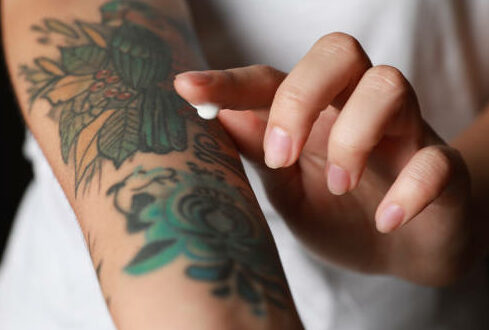
Concerns about pain during tattooing have led to the popularity of numbing creams. Cependant, the question remains: can these creams impact the healing process of a tattoo?
Numbing creams are applied before tattooing to minimize pain during the process. Once the tattoo is complete, the cream is removed, suggesting that its application doesn’t directly influence the healing process.
Cependant, potential interference with natural healing mechanisms must be considered. Some numbing creams may contain ingredients like petroleum jelly, creating a barrier that hinders oxygen reaching the skin and may impede healing. En plus, ingredients like lidocaine or benzocaine, known allergens, could cause reactions that may delay healing.
En conclusion, while numbing creams might not directly affect tattoo healing, choosing a cream compatible with the body’s natural healing mechanisms is crucial. Careful ingredient scrutiny, consultation with a tattoo artist or dermatologist, and prioritizing the well-being of the tattooed area contribute to a successful and prompt healing process.
Tattoo Aftercare and Numbing Cream Usage
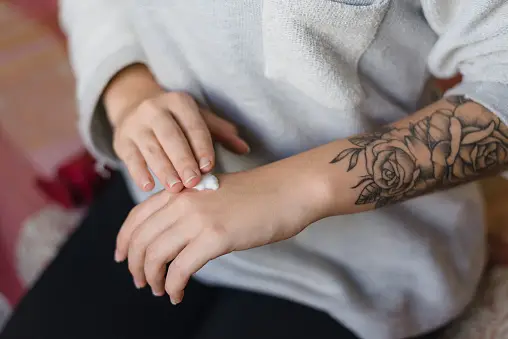
When incorporating numbing cream into your tattoo experience, it’s essential to consider post-tattoo care for a clean and healthy healing process. Here are key recommendations:
- Follow Aftercare Instructions: Regardless of numbing cream use, adhere to aftercare instructions provided by your tattoo artist. This includes keeping the tattoo clean, using appropriate healing ointments, avoiding sunlight, and refraining from picking or scratching to reduce infection risks.
- Gently Clean the Tattoo: While numbing cream aids comfort during tattooing, clean the tattoo gently afterward. Use a mild, fragrance-free cleanser with lukewarm water to remove excess ink, blood, or ointment. Avoid vigorous scrubbing to protect the delicate healing skin.
- Opt for Breathable Dressings: After cleaning, allow the tattoo to breathe. Choose breathable dressings like sterile gauze or specialized tattoo aftercare films, promoting air circulation while safeguarding against contaminants.
- Avoid Excessive Moisture: Balance is crucial in maintaining proper moisture levels during healing. Despite numbing cream’s moisturizing effects, avoid prolonged water submersion, excessive sweating, or overuse of ointments. Slightly moist, not overly damp, conditions are ideal.
- Protect from Irritants: Tattooed skin is more vulnerable to irritants. Be cautious with clothing or accessories causing friction, and steer clear of harsh chemicals, fragrances, or excessive sunlight to prevent delays in healing and adverse reactions.
By combining these recommendations with general tattoo aftercarepractices, you ensure a clean and healthy healing process. While numbing cream offers temporary relief, prioritizing proper aftercare is crucial for optimal healing and long-term tattoo quality.
Alternative Methods for Pain Management during the Tattoo Process
While tattoo numbing creams are popular, alternative methods exist for pain management:
- Mindfulness: Practice focusing on the present moment to embrace sensations without judgment.
- Deep Breathing: Use controlled deep breathing to lower tension and maintain relaxation.
- Distraction Techniques: Engage in activities like listening to music, watching a movie, or conversing with your artist.
- Numbing Sprays and Gels: Offer an alternative for those with allergies or reactions, working similarly to creams.
Conclusion
Tattoo numbing creams provide a helpful option for managing pain during the tattooing process. While they may slightly impact healing due to potential blood vessel constriction, the decision to use them depends on individual preferences. It’s crucial to consult with professionals, such as your tattoo artist and a medical professional, to make an informed decision aligned with your specific needs and preferences.


